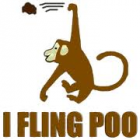Walt Krafft
Gold $$ Contributor
On the late model RR and RAR actions I have been doing, I cut the cbore 0.704-0.710 dia 0.155 deep. I then ream the chamber so the go gage is 0-0.005 below the face. I then cut the face so the go gage is only 0-0.001 deep. Then face the shoulder to dimension. Usually 0.697 plus the recoil lug thickness if one is used. This is how I do prefit barrels for about 100 actions being used for ammunition testing.So let me wander a bit more. I've always wondered on the Brownells Chamber sheet about the .708 c'bore depth. Line 4 says A minus C which normally will run about .150" and then add .010" more for a depth of .160". You already have accounted for the .010" in line 2 so why do it again. I'm drawing it up in CAD and now there is .020" gap. I'm programing the .708" c'bore and pre drill and bore the taper a little under size with the same tool.
So do you guys use the .150" difference from the front of the bolt to the lug face knowing the tenon is already short or do you do like Line 4 and go another .010" deep for a .160" c'bore depth?












